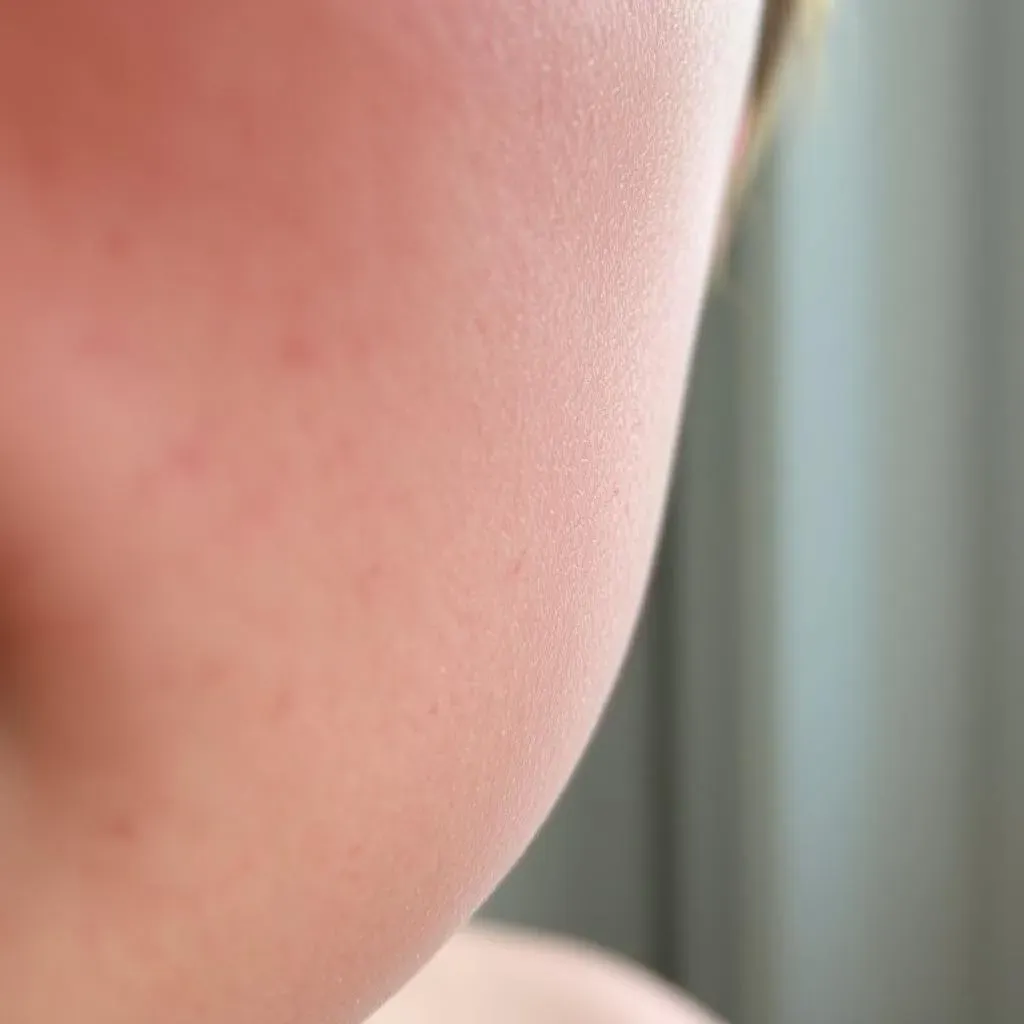Table of Contents
Are you considering laser hair removal as a solution to unwanted body hair? While this popular cosmetic procedure can be effective, it's essential to be aware of the potential laser hair removal side effects. As with any medical treatment, there are risks involved, and understanding these risks is crucial for making an informed decision. In this article, we will guide you through the common laser hair removal side effects, including skin irritation, pigment changes, and temporary discomfort. We will also explore how to minimize these risks and ensure a safe and successful treatment. Whether you're looking to remove hair from your face, body, or intimate areas, it's vital to be aware of the potential laser hair removal side effects and take steps to protect your skin. By the end of this article, you will have a comprehensive understanding of the potential risks and benefits of laser hair removal, empowering you to make the best decision for your beauty and well-being.
Laser Hair Removal Side Effects: Common Risks and Complications

Laser Hair Removal Side Effects: Common Risks and Complications
Understanding the Risks
Laser hair removal is a popular cosmetic procedure, but like any medical treatment, it comes with potential risks and complications. The most common laser hair removal side effects include skin irritation, redness, and temporary discomfort. In rare cases, more serious complications can occur, such as burns, blisters, and changes in skin pigmentation.
It's essential to understand that the risk of laser hair removal side effects can vary depending on individual factors, such as skin type, hair color, and the expertise of the practitioner performing the procedure. To minimize the risks, it's crucial to choose a qualified and experienced professional and follow their pre- and post-treatment instructions carefully.
Common Side Effects | Description | Prevalence |
|---|---|---|
Skin Irritation | Redness, itching, and swelling | Common |
Pigment Changes | Darkening or lightening of skin tone | Less Common |
Temporary Discomfort | Mild pain or stinging sensation | Common |
Assessing the Severity of Side Effects
The severity of laser hair removal side effects can vary from mild to severe. In most cases, the side effects are temporary and resolve on their own within a few days. However, in some cases, more severe complications can occur, requiring medical attention. It's essential to be aware of the potential risks and take steps to minimize them.
A thorough consultation with a qualified practitioner before the procedure can help identify potential risks and develop a personalized treatment plan to minimize the likelihood of side effects. Additionally, following the practitioner's instructions for pre- and post-treatment care can significantly reduce the risk of complications.
- Choose a qualified and experienced practitioner
- Follow pre- and post-treatment instructions carefully
- Be aware of potential risks and complications
- Develop a personalized treatment plan
Minimizing the Risks of Laser Hair Removal Side Effects
To minimize the risks of laser hair removal side effects, it's essential to take a proactive approach. This includes choosing a qualified practitioner, following pre- and post-treatment instructions carefully, and being aware of potential risks and complications. By taking these steps, individuals can significantly reduce the likelihood of side effects and ensure a safe and successful treatment.
As with any medical treatment, it's crucial to prioritize caution and take a thoughtful approach to minimize the risks of laser hair removal side effects. By doing so, individuals can enjoy the benefits of this popular cosmetic procedure while minimizing the potential risks.
Understanding Laser Hair Removal Side Effects and How to Minimize Them

Understanding Laser Hair Removal Side Effects and How to Minimize Them
Understanding the Importance of Skin Type
When it comes to laser hair removal, skin type plays a crucial role in determining the risk of side effects. Individuals with fair skin and dark hair are typically the best candidates for this procedure, as the contrast between the skin and hair color allows for more effective targeting of the hair follicles. However, those with darker skin tones or lighter hair colors may be at a higher risk of side effects, such as skin irritation or pigment changes.
To minimize the risks, it's essential to choose a qualified practitioner who has experience working with a range of skin types. They can help determine the best course of treatment and provide personalized advice on how to prepare for the procedure and care for the skin afterwards.
Skin Type | Risk of Side Effects | Recommended Precautions |
|---|---|---|
Fair Skin | Low | Standard pre- and post-treatment care |
Medium Skin | Moderate | Increased sun protection, gentle skin care |
Dark Skin | High | Specialized skin care, regular follow-up appointments |
Assessing the Role of Hair Color and Texture
Hair color and texture also play a significant role in determining the risk of side effects from laser hair removal. Coarse or curly hair may be more challenging to treat, as it can be more resistant to the laser's energy. Additionally, individuals with light or blonde hair may require more frequent treatments, as the laser may not be as effective at targeting these hair types.
It's essential to discuss hair color and texture with a qualified practitioner before undergoing treatment. They can help determine the best approach for individual hair types and provide guidance on how to prepare for the procedure.
- Coarse or curly hair: increased risk of side effects, more frequent treatments may be necessary
- Light or blonde hair: more frequent treatments may be necessary, specialized skin care may be required
- Dark or thick hair: lower risk of side effects, standard pre- and post-treatment care typically sufficient
Developing a Personalized Treatment Plan
A personalized treatment plan is crucial for minimizing the risks of laser hair removal side effects. This plan should take into account individual skin type, hair color and texture, and any underlying medical conditions. By working with a qualified practitioner to develop a tailored treatment plan, individuals can help ensure a safe and effective procedure.
It's essential to prioritize open communication with the practitioner, discussing any concerns or questions that may arise during the treatment process. By doing so, individuals can help minimize the risk of side effects and achieve the best possible results from their laser hair removal treatment.
Managing and Preventing Laser Hair Removal Side Effects for Optimal Results

Managing and Preventing Laser Hair Removal Side Effects for Optimal Results
Pre-Treatment Precautions for Minimizing Laser Hair Removal Side Effects
To manage and prevent laser hair removal side effects, it's essential to take precautions before the treatment. This includes avoiding sun exposure, waxing, and tweezing for at least two weeks prior to the procedure. Individuals should also avoid using harsh skin care products, exfoliating, and taking certain medications that may increase the risk of side effects.
A thorough consultation with a qualified practitioner before the procedure can help identify potential risks and develop a personalized treatment plan to minimize the likelihood of side effects. Additionally, following the practitioner's instructions for pre-treatment care can significantly reduce the risk of complications.
Pre-Treatment Precautions | Description | Importance |
|---|---|---|
Avoiding Sun Exposure | Reducing the risk of skin darkening or lightening | High |
Avoiding Harsh Skin Care Products | Preventing skin irritation and dryness | Moderate |
Avoiding Certain Medications | Reducing the risk of increased sensitivity or bleeding | High |
Post-Treatment Care for Optimal Results and Minimizing Laser Hair Removal Side Effects
After the laser hair removal treatment, it's crucial to follow the practitioner's instructions for post-treatment care to minimize the risk of side effects and ensure optimal results. This includes applying a topical cream or gel to soothe the skin, avoiding direct sun exposure, and keeping the treated area clean and dry.
Individuals should also avoid strenuous activities, such as exercise or heavy lifting, for at least 24 hours after the treatment. By following these post-treatment care instructions, individuals can help reduce the risk of side effects, such as skin irritation, redness, and swelling, and achieve the best possible results from their laser hair removal treatment.
- Applying a topical cream or gel to soothe the skin
- Avoiding direct sun exposure
- Keeping the treated area clean and dry
- Avoiding strenuous activities for at least 24 hours
